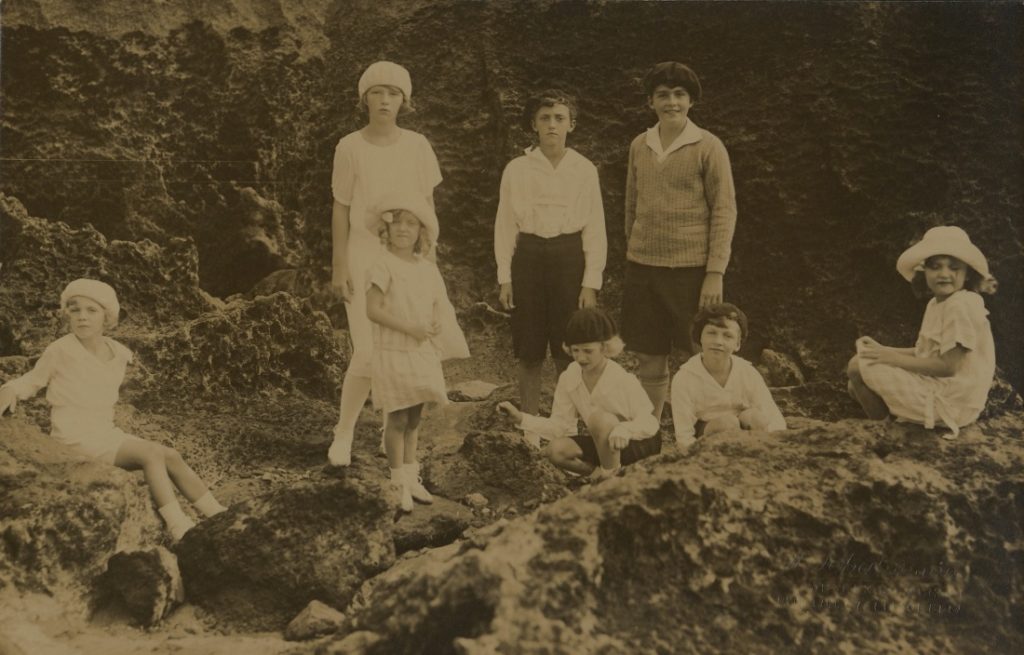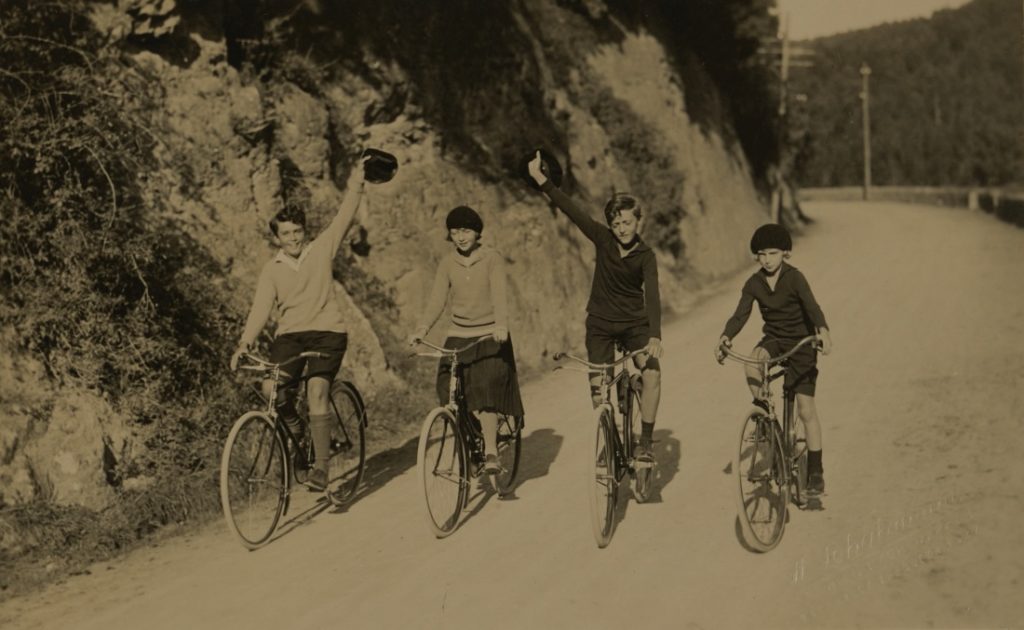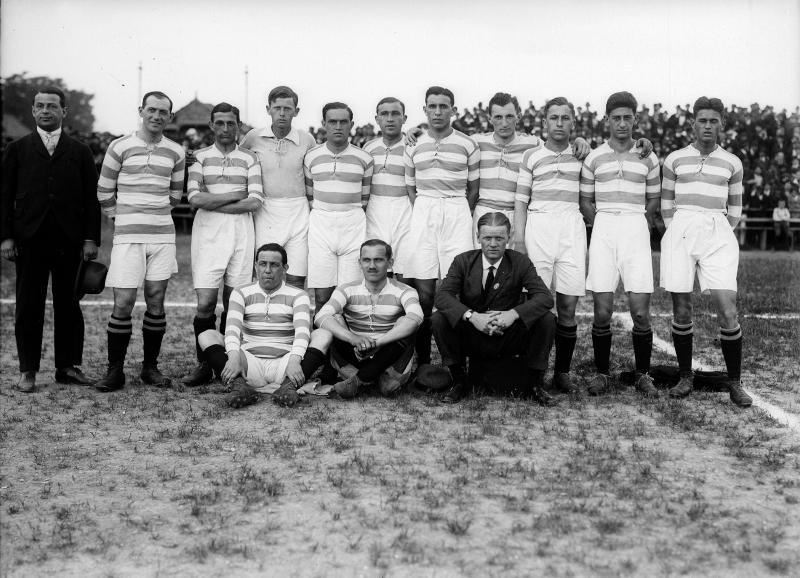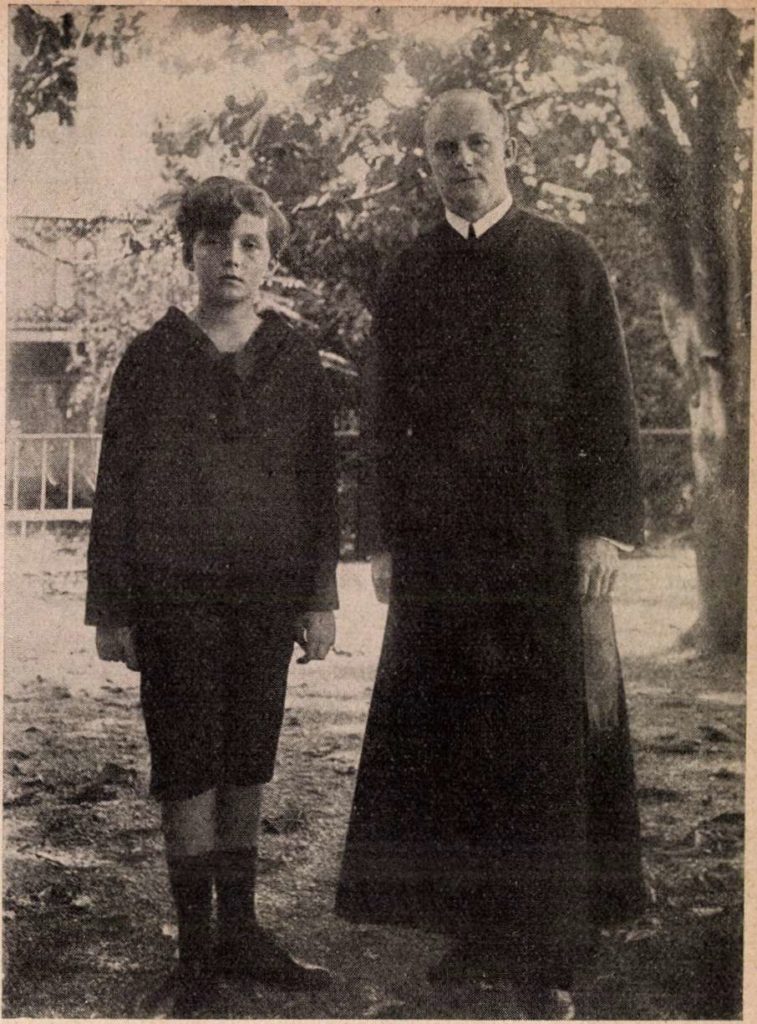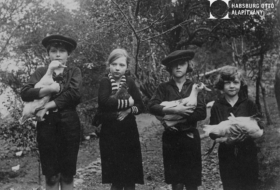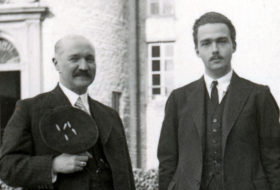Kick-off by the Archduke on the Basque coast[1]
Following the death of the last Emperor and King of the Austro-Hungarian Empire, Charles IV (I), on 1 April 1922, his widow and children soon left Madeira. The Spanish King Alfonso XIII, with the help of the British monarch, managed to persuade the Council of Ambassadors to allow the family to move to Spain.[2] The widow, her children and a small entourage arrived in Madrid in May 1922, then in August in the small Basque village of Lequeitio on the Atlantic coast. The village lies halfway between the two Basque cities of Bilbao and San Sebastian.
It was very important for Queen Zita to ensure that the ten-year-old heir to the throne, Otto, was given all the knowledge and experience he would need as a monarch. Being in exile, they were certainly not surrounded by a large cadre of scholars and teachers, nevertheless, they sought out the best and most trusted educators and professors. Once it was certain that they would be able to stay in Spain, the search for suitable tutors began. Count Heinrich Degenfeld[3], one of the most loyal confidants of Otto von Habsburg until his death, arrived in Lequeitio in October 1922 as secretary to the Emperor. His person is also important because, like the Queen and her governesses, he kept a diary of his stay. These entries, focusing on daily events, provide previously unknown information about the daily life of the family in exile.[4]
Otto von Habsburg with his brothers and sisters on the beach of Lequeitio
(HOAL_15B_4-4_F016)
The upbringing and education of Crown Prince Otto and his brothers and sisters followed a precise agenda. The diary kept by Count Degenfeld covers not only the curriculum and details of the children’s development, but also their leisure time. Besides studying on an almost minute-to-minute schedule, physical activity also played an important part in their everyday lives. Alongside the long walks, the children enjoyed playing pelota[5] and football most of all. They mostly played these ball games in the narrow gardens of the castle they lived in and on the beach.
On a bike tour around Lequeitio
(HOAL_15B_4-4_F018)
Football had been an increasingly successful and popular sport and community event in Spain for decades, especially in the Basque Country. It was not only a game, but also part of their national identity.[6] In the spring of 1922, the most successful Basque club, FC Bilbao, became the first team from Spain to tour Europe after the war, playing a series of matches as guests of Sparta Praha. Equally important for Spanish football was the impact of foreign teams coming to play in the region. As early as January 1922, Rapid Wien toured the country, playing two matches with Sociedad in nearby San Sebastian. Two months later, FC Nuremberg played as guests in San Sebastian and Bilbao.
After the war, Hungarian teams, well-known throughout Europe during the period, also started to organise international tours[7]. MTK had already contacted Spanish teams at the end of 1921, but it was only a year later that they finally travelled to Spain. Between 24 December and 7 January 1922, they played seven matches, including four with the two best-known Basque teams, Bilbao and Sociedad. As the Hungarian press had already reported in the summer that the widowed Queen and her children had moved to Lequeitio, the MTK management and players wanted to pay their respects. According to Az Est, President Alfréd Brüll intended to invite the family to the San Sebastian match, but considered it more appropriate for the host club Sociedad to take the initiative. The case soon became known, and the Spanish royal family, on account of political uncertainty, did not allow it.[8] In other words, contrary to the unverifiable rumours circulating in Hungary at the time, the Hungarian football team had not yet met the royal family.
The MTK football team, Mannschaft, 1921
(source: Bildarchiv Austria)
The news of the upcoming visit naturally reached the parties involved; it is not known whether the event contributed to the children having a “grosse Futballpartie” in the castle garden on 26 December, as written by Degenfeld. Besides the royal children, almost all the staff participated in this event.
The royal family temporarily left Lequeitio on 6 February and moved to San Sebastian. The children’s daily schedule here also followed a precise timetable, with learning and exercise. It was during these days that an important figure in the history of Spanish-Hungarian football arrived in the city: Lipót Hertzka[9], a former MTK footballer, had transferred from Essen and became a successful coach of Sociedad from 1 January 1923 and then of Bilbao from 1926. Thus, from the New Year onwards, he coached the San Sebastian team.
On 9 March 1923, on his way home from an afternoon outing, the young heir to the throne and his tutor heard familiar sounds on the beach. Otto von Habsburg was riding a pony alongside Benedictine teacher Vendel Solymos[10] when they came across the FTC managers and footballers walking by the shore. Their brief conversation revealed that the Hungarians were playing two matches against Sociedad, and to celebrate, Father Solymos invited them to a short audience at their hotel in San Sebastian. The diary of Degenfeld reveals that the Hungarian team was comprised of young students and officials who, according to press reports, were captivated to recognise the young heir to the throne on the coast.[11]
Otto von Habsburg with Vendel Solymos, 1930
(source: Képes Krónika)
In the afternoon, the FTC management and players were received in the lobby of the Hotel Savoy by Queen Zita and Otto von Habsburg. Vice President Imre Szigeti welcomed the Queen and the Crown Prince and presented the club’s silk flag on behalf of the visitors. Otto then briefly welcomed the guests and shook hands while the Queen directed a few questions to Szigeti. The details of Degenfeld’s diary entry are essentially the same as the report published in Az Est, with an additional comment that he found the ten-year-old Otto extremely articulate but very flustered. At the same time, Solymos stated that the Hungarian footballers were clearly touched. Their elation was only heightened when Father Solymos delivered the celebratory speech at their 15 March commemoration in their accommodation.[12]
The FTC football team, 1923
(source: Fradi Múzeum, tempofradi.hu)
The royal family returned to Lequeitio in July, and the diary shows that they were as consistent in their diligence in the education, upbringing and physical training of the heir to the throne and his brothers and sisters as before. By this time, they had already adopted the curriculum that had supported their Hungarian schooling, overseen by the Benedictine Fathers of Pannonhalma. In addition to studying, the excursions, games and the reception of visitors and pilgrims from Hungary and Austria remained an inseparable part of their days.
In the winter of 1923, MTK organised another tour to Spain: alongside FC Barcelona, they also counted on two Basque teams, Sociead and Bilbao. The club’s management was determined to pay their respects to the Dowager Queen and her family, especially as the previous year’s audience had been cancelled. Between Christmas and New Year, they scheduled two matches with Sociedad, and in the interval, they were able to arrange a meeting for New Year’s Day. The Hungarian team travelled in rental cars to the village some 60 kilometres from San Sebastian.
The audience began at 11:30 in the reception hall of the castle, where the Queen, her children and two ladies-in-waiting lined up to greet the delegation of 26, according to Degenfeld’s diary. MTK president Alfréd Brüll delivered a short speech, and then Otto welcomed the Hungarian team. The management then distributed a large bundle of toys and gifts, which the children were thrilled to receive. According to the coverage in Az Est, legitimist aristocrats asked President Brüll to deliver their presents to the royal children.[13] Afterwards, the management bestowed the team’s silver plaque with the inscription: “With reverence from Hungary’s champion team of many times. 1 January 1924.”
Queen Zita and her children on the beach
(HOAL_15B_4-4_F014)
The entire staff lined up at the time of the leave-taking, but the MTK footballers did not immediately head back to San Sebastian. In fact, at 2:30 in the afternoon, they played a friendly match before the Royal Family and the hundreds of locals who had come to watch. The only flat area of Lequeito suitable for a football game was on the beach, but even then, only during low tide. Reportedly, this is why Vendel Solymos planned the match for half past two, as this was the time when the largest usable area of land on the coast was available. The sidelines, the sixteen and the five and a half were drawn in the sand, and instead of slats, the goals were marked with draped sweaters. According to Az Est, the royal family arrived shortly before kick-off, and around 500 locals surrounded the field. The team was split into two eight-man groups and lined up at the center circle. The heir to the throne delivered the opening kick-off, and the match started at the whistle of steward Charles Frischer.[14] Eventually, the victory was 6-3 for the team in blue and white. At the end of the game, the players, the managers and Otto von Habsburg and his family sang the Hungarian National Anthem on the Basque coast. Afterwards, the players cheered for the Crown Prince, who, along with his siblings, gave each player an autographed photo.
After bidding farewell to the Hungarian team, Otto von Habsburg returned to the Uribarren Palace and resumed his programme as the daily schedule demanded. According to Degenfeld’s entries, football remained a favourite game among the children.
The MTK players and managers left for San Sebastian in the early evening, where a few days later – perhaps as a result of this encounter – they took revenge for the defeat they had previously suffered from Sociedad.
István Gergely Szűts
[1] Special thanks to the Fradi Museum and the MTK Circle of Friends for their help.
[2] Gergely Fejérdy: From the banks of the Danube to the island of Madeira. in Gergely Fejérdy-István Gergely Szűts-Ferenc Vasbányai (ed.): Exiled in Madeira. Documents on the Last Months of the Life of Charles von Habsburg. Budapest, Otto von Habsburg Foundation, 2022, 72.
[3] Degenfeld-Schonburg, Heinrich (1890–1978)
[4] HOAL I-1-d. Diaries of Heinrich Degenfeld
[5] pelota: a ball game of Basque origin
[6] Róbert Győri Szabó: Basque Identity and Football. Regio, 2012, 2, 78-112.
[7] Nemzeti Sport, 19 November 1921, 3.
[8] Az Est, 12 January 1923, 7.
[9] Lipót Hertzka (1893, Budapest – 1951, Montemor-o-Novo, Portugal)
[10] Vendel Károly Solymos (Schlamadinger) (1983, Nagysároslak – 1950, Budapest) was a Benedictine monk and high school teacher. Between January 1923 and the end of 1925, he was a tutor of Otto von Habsburg.
[11] Az Est, 25 March 1923, 9.
[12] Sporthírlap, 29 March 1923, 2.
[13] Az Est, 21 December 1923, 11.
[14] Az Est, 9 January 1924, 10.

